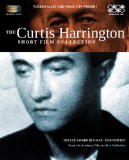| Reviews & Columns |
|
Reviews DVD TV on DVD Blu-ray 4K UHD International DVDs In Theaters Reviews by Studio Video Games Features Collector Series DVDs Easter Egg Database Interviews DVD Talk Radio Feature Articles Columns Anime Talk DVD Savant Horror DVDs The M.O.D. Squad Art House HD Talk Silent DVD
|
DVD Talk Forum |
|
|
| Resources |
|
DVD Price Search Customer Service #'s RCE Info Links |
|
Columns
|
|
|
Curtis Harrington Short Film Collection, The
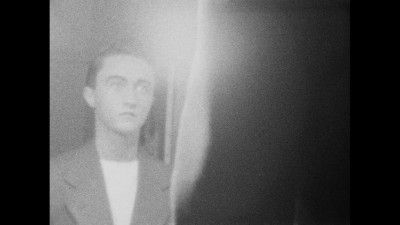
Please Note: The images used here are taken from the DVD edition included in the release, and do not directly reflect the picture quality of the Blu-ray edition under review.
If you look up page for director Curtis Harrington on IMDB, you'll be confronted with an extremely checkered Hollywood filmography, one that begins promisingly enough with the personal/auteurist Dennis Hopper-starring 1962 feature Night Tide but then quickly begins a descent through a purgatory of interestingly half-rancid B-movies (like 1971's What's the Matter with Helen?) before crash-landing ignominiously into cheesy/addictive-TV hell (Harrington directed episodes of Charlie's Angels and Dynasty, among others). But long, long before that, way down in the reverse-chronological list of Harrington's credits, you'll see a little group of short films about which, until now, much less was widely known (and, inarguably, had gone much less widely seen) than his more embarrassing for-hire work -- films that hold the key to Harrington's dreamed-of but never fully realized true calling as a cinematic artist and poet. It's these five films that have now, after being restored by the Academy Film Archive, become accessible to us in the form of The Curtis Harrington Collection, a new Blu-ray being released by indie music/publishing venture Drag City and Flicker Alley (the imprint that not too long ago brought us a similarly deluxe release of Méliès's A Trip to the Moon). As seen here in all their freshly restored, revived glory, they're revelations -- nothing less than a long-missing, important chapter in the story of American avant-garde/experimental film.
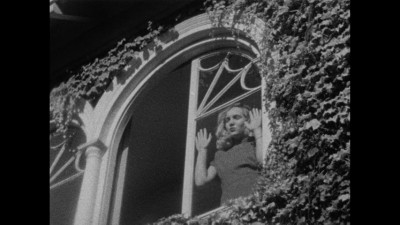
Like the art cinema of David Lynch or Luis Bunuel (not to mention Harrington's most immediate influence/mentor, the long-venerated celluloid poet Maya Deren, whose 1943 short Meshes of an Afternoon clearly turned the budding filmmaker Harrington on to the medium's wider-than-imagined possibilities), Harrington's films aren't abstract so much as they, very much like a dream (the closest experience to cinema real life offers, and offered long before movies ever existed), consist of narratives with recognizable, "real" human figures and places where some kind of story is happening, except with a disconcerting adherence to their own unpredictable, irrational internal logic and sign systems. In 1946's 13-minute Fragment of Seeking, his first completed work as a mature filmmaker, a twentysomething Harrington himself appears as the bespectacled, fedora'd, trenchcoat-clad, faintly androgynous (he resembles Truman Capote a bit) young man who, when he enters through an imposing gate into the courtyard of a beautiful old ivy-covered L.A. apartment building, is captivated and led ever deeper into a mysterious realm (like Alice down the rabbit hole) by a girl who, with her Veronica Lake blonde tresses, is ravishing enough to be a starlet. As he watches and pursues her through the walkways and corridors around and inside of the building, what at first looks like voyeuristic flirtation becomes a journey into the young man's own deepest fears and desires -- a gorgeous and terrifying pulling back of the veil of surface reality for a glimpse of both his true self and that too-close-for-comfort Freudian link between sex and death. Like all of this early work, the film is more or less silent-with-score (by Ernest Gold, whose music is fantastically cinematic and integral to setting the mood of many of these these moody pictures), and Harrington uses no effects any more special than the skilled, inspired manipulation of shadow and light and a very finely honed intuitiveness at the editing table to create a world as convincing and vivid as it is removed from realism -- one with a lush, eerie atmosphere fraught with allure, suspense, danger, and dread.
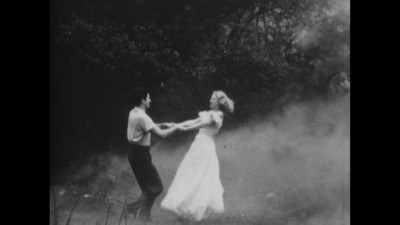
Harrington expands and perfects his wordless, visually arresting aesthetic over the next two entries, Picnic (1948, 22 min.) and On the Edge (1949, 6 min.). Picnic brings the world of conventional family life into play as the secure but mundane reality from which the man played by Harrington escaped through Fragment of Seeking's gate/portal: Here, a picnic on the beach -- the Sunday outing of a respectable middle-class mother, father, college-age older brother, and adolescent kid sister -- is welcomely but disturbingly disrupted by an apparition the young man catches out of the corner of his eye: A mysterious blonde female figure disappearing out of sight as she runs down the shore, a figure much like the similar-looking female instigator of Fragment of Seeking's journey. Lured away from his mundane reality, the young man enters a labyrinthine, self-revealing dreamscape more complex, detailed, erotic, and ultimately horrifying than polite family lunch conversation would ever have admitted or abided. On the Edge (1949, 6 min.) casts Harrington's own father as a lost wanderer in a muddy, burnt-out landscape whose only reassuring, human presence is a pleasant lady (Harrington's mother) knitting in a rocking chair on the porch of a dilapidated cabin. The man suddenly snatches the end of yarn and begins running as far and as fast as he can down a long, desolate road that bisects this wasteland, trailing the string as his fragile connection to the only home that exists here. This exhilarating rush of movement is strikingly shot, a composition highlighting the movement and trajectory of the figure within it, then cuts to a handheld, close-up rush as Harrington's camera lets us feel the thrill of speed and escape with the running man. But if the line he trails behind him is connecting apron string, it's also lifeline, and when the unspooling ball of yarn observed with calm bemusement by the woman finally runs out, the man becomes one with his barren, boggy surroundings in a somberly beautiful, petrifying conclusion.
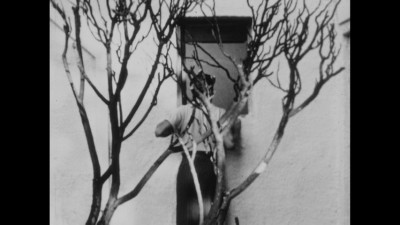
For 1953's The Assignation, shot during an interlude of cosmopolitan European self-exile, Harrington takes the plunge into vivid color and beckons us through the canals of Venice for a gondola ride with a sinister passenger, clad in a black cloak and face always hidden from us by a hat and severe, deforming mask (familiar from an identical disguise later featured prominently in the masked-ball/orgy scene of Kubrick's Eyes Wide Shut) and clutching a too-red rose (placed, oddly but perfectly, in foregrounded close-up in some of the film's brilliant compositions, so that the world seems to revolve around its immobile center as the gondola glides and the ancient city goes by). When this seductive, foreboding apparition arrives at his destination for the assignation of the title, the film ends on a note of prismatic ambiguity, leaving suspended, uncertain, and haunted our presumptions about who he (or she) is and what the flower means. The Wormwood Star, also in vibrant, bright color, is the only one of these films to feature voice-over narration in addition to music. It's a kind of documentary about one of Harrington's fellow SoCal bohemians, a woman called "Cameron" whose persona, paintings (from which a particularly beguiling series is given the Andrei Rublev treatment by Harrington, with sharp cutting to a stately but rhythmic score and obsessive, lingering pans and tilts over the canvas's multiple details), and poem read in voice-over (whether written by Cameron herself or from some occult text, it's not indicated) vacillate between the Nietzchean sublime and the supernatural/"Satanic" ridiculous, but it's possessed of both moments of awesome beauty and a certain touching, memorializing portraiture of a fleeting, more hopeful and radical era than our own that was then just beginning. (Cameron burned most of her work shortly after this film was made, leaving it the only extant proof that the paintings it fetishizes ever actually existed.)*
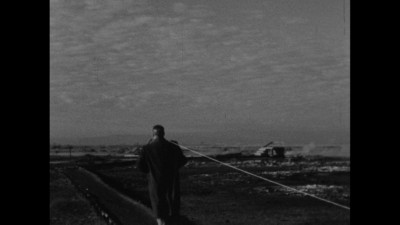
And speaking of going from the sublime to the ridiculous…well, the quality doesn't drop off that steeply, but there is a sixth film, made much later, in Harrington's retirement, called Usher (2002, 43 min.) -- an adaptation of Edgar Allen Poe's The Fall of the House of Usher, a project with which Harrington had been obsessed since high school -- that, with its modern-day sync sound and production values, breaks the spell that might've been cast with its sometimes resonantly lurid imagery, had it been made in the same way the '40s and '50s work was (it bears one parallel with Fragment of Seeking that I won't spoil expect to intrigue you by saying it doubles as a wicked camp homage to What Ever Happened to Baby Jane?). Audible dialogue and its effect on how performances come across is no progression or improvement in this context; it's an impediment. Harrington and the other lead actor (as Usher and his interlocutor, respectively) seem stilted, clumsy in an unintentional way -- neither "realistic" acting or stylized, over-the-top performance -- that makes this entry, by far the longest on the disc's main program, drag and feel even longer. It's a safe guess that Usher was included for sentimental reasons (it was Harrington's last personal work, made after a return to self-financed projects after his decades of wandering in the deserts of TV and the Hollywood B, C, and D-lists), but I would've programmed more rigorously, relegating Usher to the supplements and including on the main program two bonus shorts buried there: Harrington's first, much more interesting Fall of the House of Usher adaptation, made on 8 mm in his family's garage when he was 14, and a public-service film made for the U.S. Information Agency, 1966's The Four Elements, a blatantly propagandistic gig into which he nevertheless miraculously snuck a hefty payload of visual splendor resulting from his artist's sensibility. Such a re-programming is easily done with the click of a button on your remote, of course, and I'd recommend it.
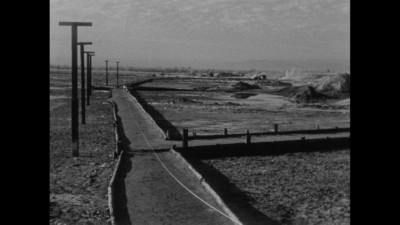
That slight, ultimately insignificant misstep in presentation aside, though, The Curtis Harrington Collection is a remarkable cache of previously obscured cinematic treasure of a value -- not just in historical/preservational importance but in sheer, engrossing, revelatory watchability -- high enough that it seems amazing it hasn't yet been canonized in the annals of international art cinema the way Deren's, Genet's, Warhol's, Jack Smith's, Kenneth Anger's, Brakhage's, et. al's accomplishments have been. That will happen soon enough, though, once this new re-release does its work and lands in the eagerly outstretched hands of the curious or uninitiated who've thus far been denied the pleasure of these films. This disc is an item that anyone who's ever enjoyed and admired the storytelling cinema as experiment and/or dream (calling all fans of all the aforementioned artisans of short films, as well as narrative-feature dream-spinners from Val Lewton to Cocteau to Charles Laughton to David Lynch -- what serious cinephile hasn't been touched and affected by that rich tendency in the medium?) will be inherently eager to have in their collection.
*Thanks to conscientious reader Nate Bell for bringing to my attention the fact that the subject of The Wormwood Star is not a single painting, as I had originally stated, but rather a series of works by Cameron.
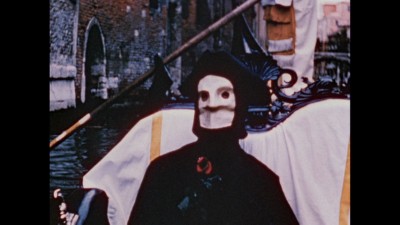
Video:
Presenting each of Harrington's films at their original aspect ratio of 1.33:1 (except for Usher, whose AR is 1.78:1 widescreen), these transfers, made from new Academy Film Archive restorations across the board, are as faithful as possible to the look of the source materials, which is sometimes on the rougher side (reflecting, through lines, marks, flicker, and other signs of wear, the lost/worn state of much of the work as well as the lower-budget conditions of their creation and postproduction/processing). It appears, however, that the utmost care has been taken in the restoration and transfer/authoring processes in order to retain the highest picture quality possible. Digital noise reduction (DNR) and other fine-tuning have been done judiciously when at all, leaving a healthy amount of celluloid-like grain/texture to the image, while no aliasing, pixellation, edge enhancement effects, or other compression artifacts are present to distract from the visual atmosphere.
Sound:The (restored) sound of each film is presented as a Dolby Digital 2.0 track, which easily accommodates the music-only soundtracks (for most of the films). Despite retaining a certain tinniness, blare, or occasional muffled quality clearly endemic to the source materials (and, likely, due to Harrington's lower budgets and the available recording technology of the time), the treatment of the audio has left the absolutely vital sonic dimension of the experience (the scores are an integral part of the tone and any meaning of what we're seeing) entirely intact, with none of its effect lost in the transition to digital home media.
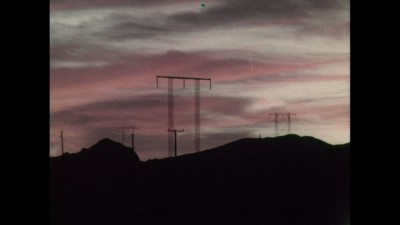
--The Four Elements (1966, 13 min.), a film made by Harrington in the propagandistic service of the U.S. Information Agency. Surveying America's dams, coal mines, and impressive power grid and technological/manufacturing capabilities, and portentously narrated by Neil Jardine, its purpose was to show people in other countries that, in the Cold War era, U.S. mastery of "the four elements" (fire, water, air, and earth) was superior. If you ignore the overbearing, now rather transparent narration, however, Harrington's striking, often exquisite footage -- with an eye for the sublime lurking within all the show of American utilitarian practicality, and accompanied with music by Bach, to which the images are rhythmically, evocatively edited -- has more in common with the work of James Benning or Terence Malick than public-service/industrial-film conventions would ever normally allow for.
--Two extended recent interviews with Curtis Harrington -- one, running about 20 minutes, from 2005, excerpted and re-cut by documentarians Tyler Hubby and Jeffrey Schwarz from interviews shot for their 2009 film on the late filmmaker, House of Harrington; and the other, a 45-minute session shot for the archives of the Getty Research Institute in 2003, in which Harrington (an inveterate but never arrogant name-dropper) recounts his life and artistic experiences in some detail, dispelling, for example, the romantic idea that he and acquaintances/fellow avant-gardeists Kenneth Anger and Gregory Markopoulos were ever collaborators in any true or meaningful way.--Included in the "combo back" is a DVD/standard-definition version of The Curtis Harrington Collection, the contents of which are identical.
--The Fall of the House of Usher, Harrington's 1942 version of the same Edgar Allen Poe story on which he would base his final short, Usher (see above). This 10-minute adaptation, homemade by a precocious 14-year-old Harrington on 8 mm, is much cruder yet much more inventive and beautiful than his relatively large production of 2002 -- a silent, atmospheric, eerie little work, obviously made on a shoestring, that reinforces that old truism about necessity being the mother of invention.
--A 30-page booklet packed with personal and behind-the-scenes photos from Harrington's life and career, and featuring an essay by the editor of his biography, Lisa Jannsen, who succinctly but thoroughly surveys Harrington's unusual filmmaking path; and "Preserving the Short Films of Curtis Harrington", a brief technical/personal memoir by Academy Film Archive preservationist Mark Toscano, who worked with Harrington before the filmmaker's death on the restorations compiled on this release.
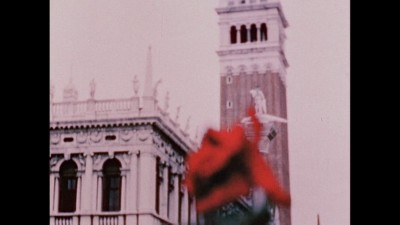
Once upon a time, the U.S. of A. had our own Jean Cocteau in the making, but he was too early for the 1960s window that let his spiritual kin (Kenneth Anger) and progeny (Andy Warhol) in, and we consigned him to a downward trajectory of increasingly camp-value-laden features until he finally had to make his living directing scattered episodes of addictive-crap TV like Dynasty. But a little treasure trove of Curtis Harrington's dreamlike, lush, sexually ambiguous, and death-obsessed short films remains, the newly restored versions of which have now been carefully compiled for this new Blu-ray release, and they are a revelation. In the five shorts that he made between 1946 and 1955, Harrington, using more imagination and inspiration than material resources, used the magical medium of cinema to inscribe his wordless visions of the ineffable exaltations and horrors of sex and death, longing, and perpetually mutable identity onto celluloid in a way more famously associated with Luis Bunuel or David Lynch; in some ways, in the chronological aesthetic lineage of cinema, he's the long-missing link between the two. But it's much better late than never to have the chance to get lost in Harrington's transfixing, seductive miniature dreamscapes; The Curtis Harrington Collection is the most gratifying resurrection of an undeservedly obscured film artist to be bestowed upon us in quite some time, and is sure to secure the ascension of these lost, strange, highly accomplished labors of love to their rightful place -- right up alongside the best of Maya Deren and Stan Brakhage -- in the pantheon of American avant-garde/experimental cinema. Highly Recommended.
|
| Popular Reviews |
| Sponsored Links |
|
|
| Sponsored Links |
|
|
| Release List | Reviews | Shop | Newsletter | Forum | DVD Giveaways | Blu-Ray | Advertise |
|
Copyright 2024 DVDTalk.com All Rights Reserved. Legal Info, Privacy Policy, Terms of Use,
Manage Preferences,
Your Privacy Choices | |||||||









